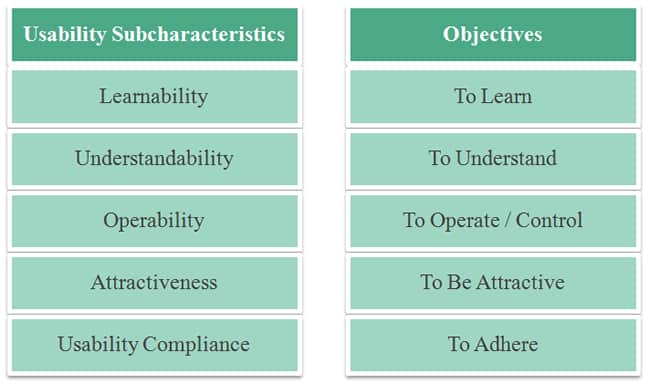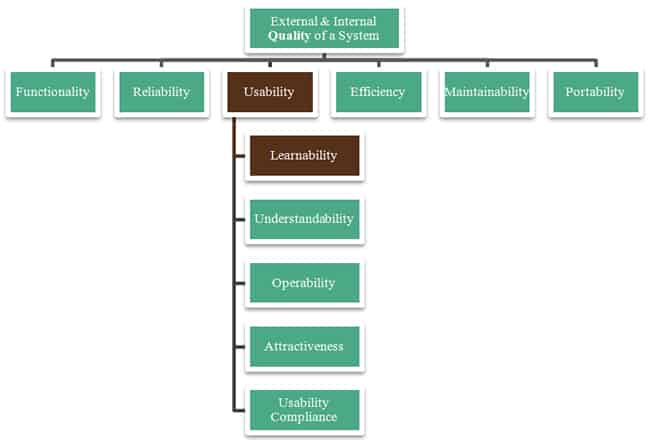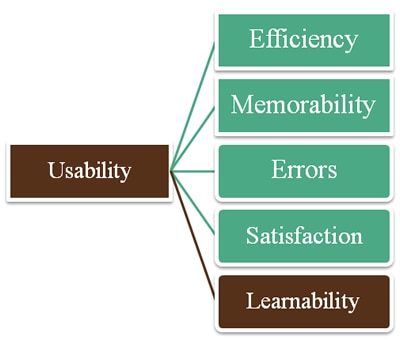
The difference between usability and learnability is a subject that has been discussed a number of times particularly because of the concerns that it raises as these two terms are quite often wrongly used interchangeably. The reason why I will be discussing them in this post is very similar to the reason why I discussed the differences and relationships between Usability and Accessibility and Usability and User Experience. Such reason is that in a bid to distinguish between two terms writers tend to over-emphasize on highlighting the distinction, yet they fail to discuss the relationship that exists between usability and learnability.
I feel that understanding the relationship is as important as understanding the differences since the relationship is the reason why these pairs of terms are confused in the first place. In this post I will first highlight the differences between usability and learnability so that the distinction is clear and then proceed to discuss the relationship that exists between them in a clear, concise way.
The Difference between Usability and Learnability
- ISO 9241-11 Definition: Usability is concerned with “the extent to which a product can be
used by specified users to achieve specified goals with effectiveness, efficiency and satisfaction in a specified context of use” (ISO 9241-11, 1998). Learnability is also defined in ISO 9241-11 as a simple attribute: “time of learning”. - ISO 9126-1 Definition: Usability is defined as “The capability of the software product to be understood, learned, used and attractive to the user, when used under specified conditions.” (ISO/IEC 9126-1, 2000). The ISO 9126-1 definition also adds the aspect of safety to usability as the “ adverse consequences of use (including not only health and safety, but the potential business and financial consequences of errors in usage). Thus the emphasis is also on the importance of making a system usable to safeguard the health and safety of its users from injuries such as Repetitive Strain Injury (RSI). Learnability is addressed in ISO 9126-1 as a sub characteristic of usability along with understandability, operability, attractiveness and compliance and is defined as “the capability of the software product to enable the user to learn its application”. Whilst ISO 9241-11 defines learnability as a single attribute that means “time of learning”, ISO 9126-1 states that learnability itself has several attributes that can make a system learnable. These are “comprehensible input and output, instructions readiness” and “messages readiness”.
- Aim: The aim of usability is to make it possible for users to achieve their goals when using your system or web site. On the other hand, learnability focuses on the usability aspects that need to be implemented so as to make it easier for users to learn how to use your system or web site.
- Defined as a Question: Usability can be modeled as the question “Can the user accomplish their goal?” whereas learnability can be phrased as “How easy is it for a user to learn how to use your system?”
- Effect on the user: The more learnable a system is, the less time a user takes in order to understand how to do a specific task without having been previously trained and without using any documentation. In this context, the more usable a system is, the more possible it is for a user to continue using the system efficiently over long periods of time.
- In terms of a web site: Suppose that the web site is an e-commerce web site. Then using the ISO 9241-11 definition above, the usability of that web site is based on the degree to which it allows its users to achieve their goals (be they to obtain product information and/or purchase products) with effectiveness, efficiency and satisfaction. The learnability of such a site is based on how fast and easy it is for the users to understand its design layout in order to be able to achieve their goals. A learnable e-commerce web site is intuitive – its users can easily navigate in it to locate products, obtain information about them, add them to cart and complete the checkout process.
- Which is the more important – Learnability or Usability? In his book User Interface Design for Programmers , Joel Spolsky states that if you are designing the user interface (UI) for an informaion kiosk, then learnability should be your primary focus but if you are designing the UI for a word processor, then you should focus on usability. This is because the typical user of an information kiosk will use it once or occasionally whereas a word processor will be used a number of times by the same user. Offering help to learn how to use a system or a web site is good when, like the information kiosk, it is going to be used once or occasionally. Such users don’t mind assistance and going through a couple of extra screens as long as it helps them achieve their objective. However, for systems that need to have high user productivity such as a word processor, usability is more important than learnability. Just imagine going through instructions and additional steps to print a word document! That is why word processors have icons so that users who have learnt how to use them can perform tasks quickly. In fact, a learnable user interface can be very cumbersome for experienced users. For more information about when Learnability is more important than usability, I suggest taking a look at Michael Wilson’s excellent post When Is Learnability More Important Than Usability.
The Relationship between Usability and Learnability
Various experts have classified learnability as an active component of usability. In fact, when there is synergy between usability and learnability, the system is considered as being “integrated” since a seamless union develops between the use of the software and the learning process (Squires .To conclude, when the synergy between usability and learnability occurs, the use of the software can be thought of as “integrated” in that a seamless union develops between the use of the software and the learning process (Squires, D. and Preece, J. Usability and learning: Evaluating the potential of educational software. Computers & Education 27, 1 (1996), 15-22.). The following are what I consider as being the most influential classifications.
- IEEE Definition: The importance of learnability within usability can be clearly seen in the IEEE definition of usability which states that usability is “the ease with which a user can learn to operate, prepare inputs for, and interpret outputs of a system or component “ (IEEE Std.610.12-1990).
- Usability Subcharacteristics (ISO 9126-1,4): Based on the ISO 9126-1 and 4 “quality in use model”, learnability is considered to be a subcharacteristic of usability, along with understandability, operability, attractiveness and usability compliance. This means that the objective of learnability, which is to make a system easier to learn is in itself one of the five objectives of usability. As shown in the table below, each usability subcharacteristic has its own objective. The achievement of these objectives is what ultimately makes a system usable.

The relationship between usability and learnability according to this classification can be seen in the diagram below:
- Usability Principles (Dix, Finlay, Abowd and Beale): In their renowed book Human Computer Interaction,the authors classify their rather lengthy list of usability principles under three main headings:
- Learnability: The ease of new learners to learn the UI and experience users to use the UI to do more.
- Flexibility: Multiplicity of ways to interact with the system.
- Robustness: Level of support for the error handling.
- Usability as a Quality Attribute (Nielsen and Schneiderman):This classification treats usability as a quality attribute that assesses the ease with which user interfaces can be used. Within this classification, learnability is one of the five parameters that define the usability of the user interface:
- Learnability: How easy is it for users to accomplish basic tasks the first time they encounter the design?
- Efficiency: Once users have learned the design, how quickly can they perform tasks?
- Memorability: When users return to the design after a period of not using it, how easily can they reestablish proficiency?
- Errors: How many errors do users make, how severe are these errors, and how easily can they recover from the errors?
- Satisfaction: How pleasant is it to use the design?

Want to learn more?
If you’d like to…
- get an industry-recognized Course Certificate in Usability Testing
- advance your career
- learn all the details of Usability Testing
- get easy-to-use templates
- learn how to properly quantify the usability of a system/service/product/app/etc
- learn how to communicate the result to your management
… then consider taking the online course Conducting Usability Testing.
If, on the other hand, you want to brush up on the basics of UX and Usability, then consider to take the online course on User Experience. Good luck on your learning journey!
(Lead image source: tookapic – Creative Commons)
